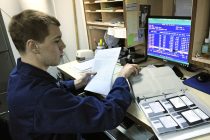Digital dictation consists of hardware such as portable hand held devices or a microphone connected to a PC to record speech. Widely used in the transcription industry, these devices are far superior than their analog counterparts in many ways, for both the individuals dictating and those transcribing. Digital files can be edited to remove unnecessary information before being sent to a transcriptionist. The files can also be linked directly to computers where they are transferred to a specific network for transcription once uploaded onto the computer’s system. Transcription professionals on the other hand can easily access digital files, listen, and pause, rewind, or fast-forward to create an accurate document.
Many professionals ranging from lawyers to doctors have been using digital recorders for a number of years, with schools also beginning to make use of the advantages of digital dictations. The following are ways in which digital dictations have proven useful to students.
Enable Creation Of Notes
Digital dictations make the process of creating notes easier and faster. Instead of manually writing what a lecturer is saying, students can simply record the audio and have it converted into text. Alternatively, should a student be unable to attend class, his/her digital recorder can be used to capture a lecture, which can be assessed later for important class data. When it comes to summarizing lectures, digital dictation is a very useful and powerful tool to students as it enables the taking of more detailed notes.

While background noise may affect the quality of the audio, a variety of software can be used to filter out any unwanted noise. Several software programs are available for this purpose ranging from high-tech headphones that can clear out background noise to computer programs, which can highlight the voice of a speaker.
Aid In Preparation Of Projects
People have different thinking styles that determine the most suitable way for an individual to record his or her thoughts. Visual thinkers can visualize what they want to say and therefore find it easy to write down their thoughts. Such people find it easy to prepare school projects on their own. Auditory thinkers on the other hand, can easily verbalize their ideas but find it hard to put those thoughts on paper. Dictation methods provide a good solution for auditory thinkers during the preparation of school projects.
Dictating content for a school project is highly advantageous as it speeds up the writing process. Speaking ideas is much faster than thinking and putting the thoughts into words at the same time. With the help of a professional transcriptionist, the audio can be converted into text in a timely.
In conclusion, digital dictations are very useful to students. Aside from the above uses, new methods for using audio recordings within teaching and learning are coming up as the use of digital learning technologies continue to grow. Students use digital recorders to generate recordings, which may be used as part of a learning activity. Other uses of digital recorders include making field recordings, sharing recordings onto virtual learning environments, and recording group sessions.
Brodie Adamson is a long-time writer whose articles mostly cover the topic of audio transcription. If you are in need of a professional transcriptionist, Brodie suggests you click here to get high quality transcription services.




